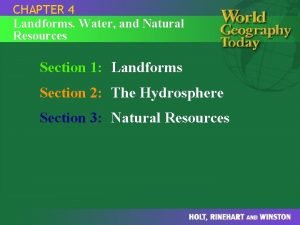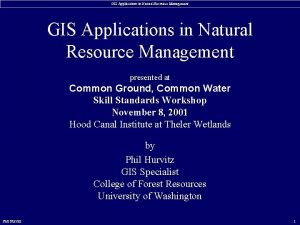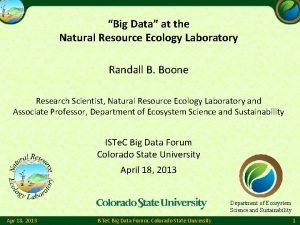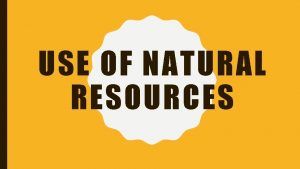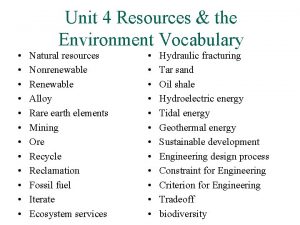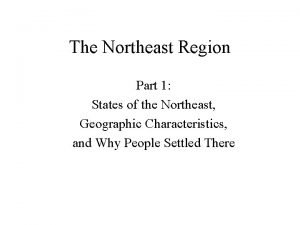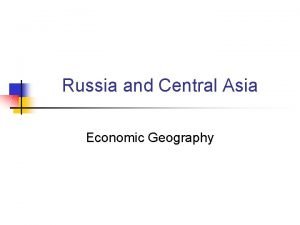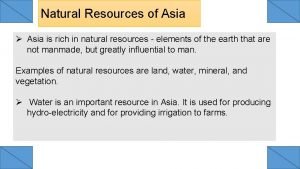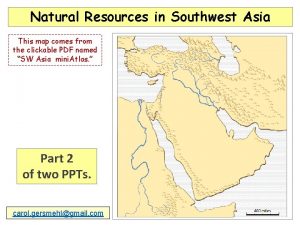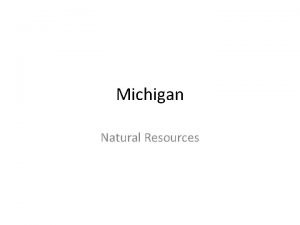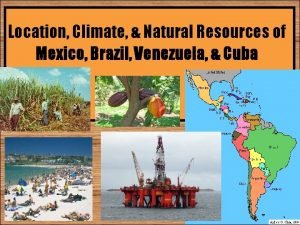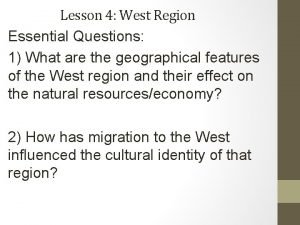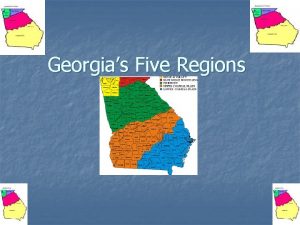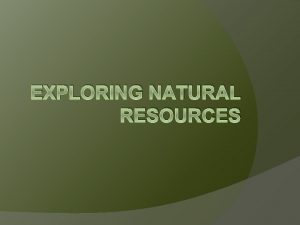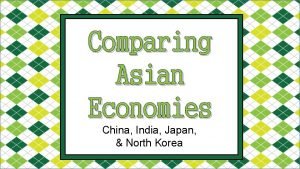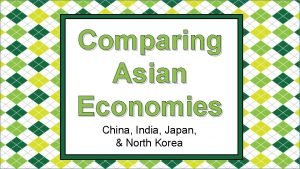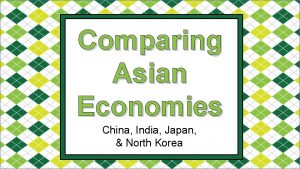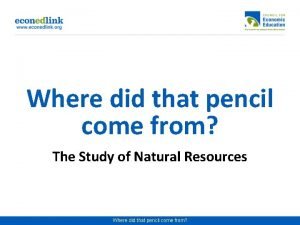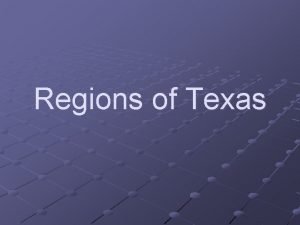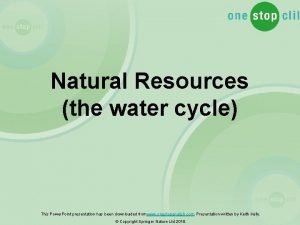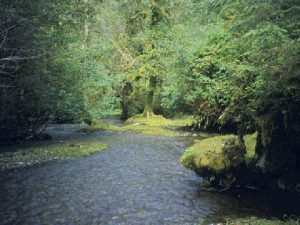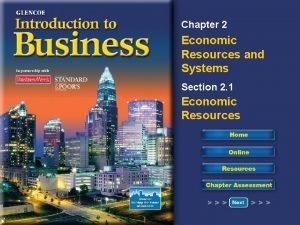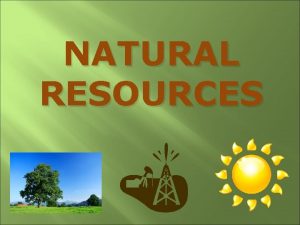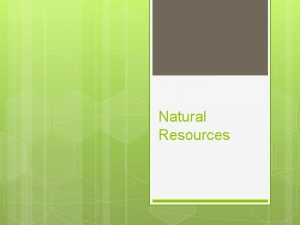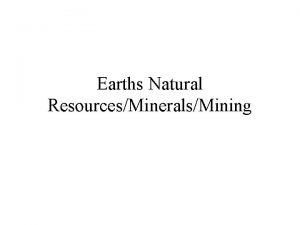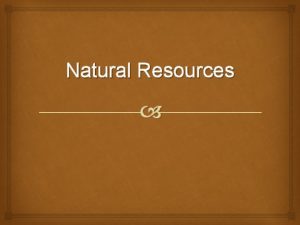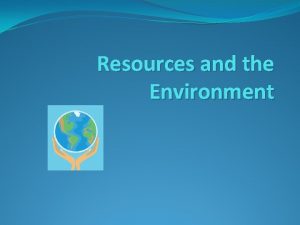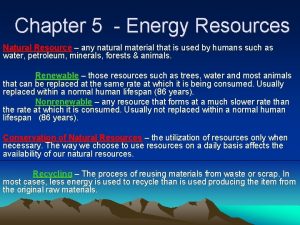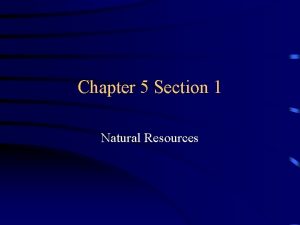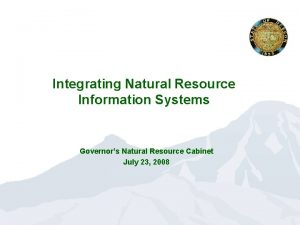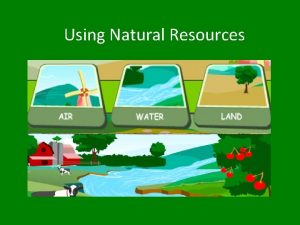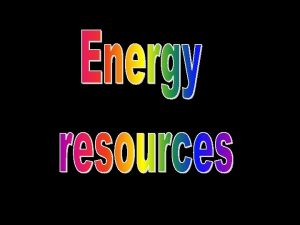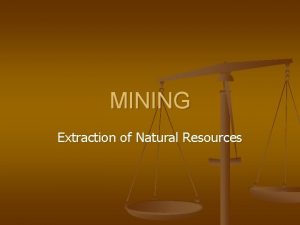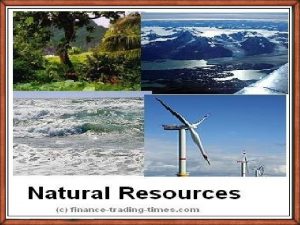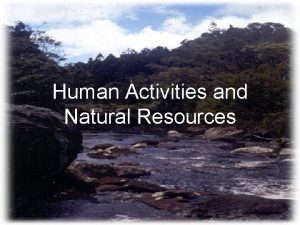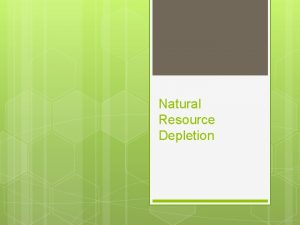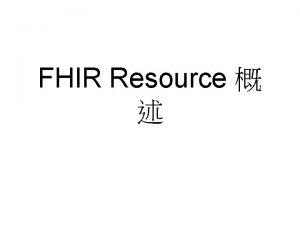Chapter 13 Economics of Resources Natural Resource Economics


































- Slides: 34

Chapter 13: Economics of Resources Natural Resource Economics

Natural resource-A resource provided by nature Natural resources important to agriculture 1. Land 2. Water 3. Air? ? ? 4. Wildlife? ? ? 5. Minerals? ? ?

Types of natural resources: Fund or Stock Use "uses up" the resource Nonrenewable or renewable only over a very long period of time Oil, coal, gas, Topsoil? ? Soil productivity? ?

Flow Resource Not "used up" Renewable Cover crop as a source of nutrients Water maybe but. . irrigation water table? ? ? Trees

Issues in agriculture involving natural resources 1. Soil Conservation 2. Water quality 3. Chemical fertilizer runoff 4. Pesticides & the Environment 5. Air pollution near livestock facilities 6. Agriculture near industrial areas 7. Acid rain 8. Wildlife & agricultural production coyotes vs sheep hunters 9. Others

Pricing of Stock (nonrenewable) resources How should a stock resource be priced? 1. Cost of recovery Over time, the easily recovered resource will be removed first increasing marginal cost of recovery The first oil wells were but a few hundred feet deep Stock resources ultimately become more expensive to recover as easily recovered supplies are exhausted New recovery technology needed to obtain supplies

Examples: An ounce of gold from many tons of ore Large-scale off-shore drilling platforms New technology can, in some instances, dramatically lower recovery costs In other instances, new technology can keep recovery costs from increasing

2. Cost of recovery plus money for investment in new technology for recovery 3. Use renewable resources instead grain alcohol as a fuel 4. Substitute nonrenewable resources in good supply for nonrenewable resources in short supply coal versus oil for fuel & electricity oil vs. natural gas

Total Resource Reserve Proved Potential Probable Economic Extraction Feasibility Uneconomic Decreasing certainty of existence Possible Speculative

Total Resource Reserve Proved Potential Probable Possible Speculative Economic Extraction Feasibility New Recovery Technology Uneconomic Decreasing certainty of existence

Total Resource Reserve Proved Economic Extraction Feasibility Potential Probable Possible Speculative New Discoveries New Recovery Technology Uneconomic Decreasing certainty of existence

Total Resource Reserve Potential Proved Probable Economic Extraction Feasibility Uneconomic Decreasing certainty of existence Possible Speculative

Total Resource Reserve Proved Potential Probable Economic Extraction Feasibility Uneconomic Decreasing certainty of existence Possible Speculative

U. S. Oil production is rebounding as imports are falling 2013 U. S. Oil production estimated at over 7 million barrels/day

Oil Rigs in the Bakken Field of Northwest North Dakota (field started 2006)

Conclusion We do not really "run out" of a nonrenewable resource As new recovery technology develops some of the resource uneconomic to recover becomes economic to recover As new discoveries are made some potential reserves become proven reserves

Extraction always feasible at some price. . . But what price? ? 1. cost of extraction 2. extraction + Research & Development costs 3. Imputed value, Implicit worth (Cost of "next best" alternative) Arab oil vs grain alcohol

An oil crisis, what happened? We didn't run out of oil, at least not yet Gasoline prices "reasonable" again Monopoly power of oil cartel broken Autos became more fuel-efficient Small shifts in demand caused price reductions

Demand for oil, 1979, Short Run, U. S. P S 2 p 2 S 1 Demand for oil inelastic in short run Supply restriction by OPEC caused large increase in price even though quantity demanded decreased by very little p 1 Demand q 2 q 1 Q/u. t.

Long-run Demand Supply for oil, U. S. P S 2 S 3 p 2 p 3 p 4 S 4 Demand q 2 q 3 q 4 Q/u. t.

In the long run Demand more price-elastic as cars become more fuel -efficient More substitutes for oil Old, oil-burning furnaces replaced OPEC monopoly power reduced less able to restrict supply as non-OPEC nations produce more Supply gradually shifts outward Prices gradually move downward

In the long run New technology makes previosly uneconomic sources economic (Bakken field in North Dakota) More substitutes for oil Supply gradually shifts outward Electric-powered vehicles Wind farms Solar panels Better insulated homes and factories More fuel efficient production practices in manufacturing

Soil Conservation Problem: How do you get farmers to implement soil-conserving practices when they can make more money in the short run by not implementing the practices? Borrowing from the productivity of land for future generations

Alternatives 1. Scold farmers threaten cajole not very effective (usually) hard to justify if your family is starving Educational efforts by Soil Conservation Service

2. Government subsidies Federal government pays part or all of the cost of the conservation practice This gets farmers interested (usually) Why is SCS a government agency? Farmers, as individuals would not look at long run Subsidy programs heavily used CRP is basically soil conservation

3. Develop conservation practices that are economically warranted in the short run A few conservation practices are more profitable to farmer than conventional practices even in the short run Min and no-till as good or better yields lower machinery costs soil conserving compared to conventional tillage

Energy and U. S. Agriculture How is efficiency in agricultural production measured? 1. Output Per Worker US agriculture one of the most efficient in the world based on this criterion Only one measure of efficiency Assumes that labor is the "high cost" input that must be conserved May not continue to be the most important measure

Resources used in US Agriculture

2. Output Per Unit of Fertilizer 3. Output Per Unit of Pesticide 4. Output Per Unit of Capital Invested 5. Output Per Unit of Liquid Fuels Energy Based on measures 2 -5, above, the U. S. probably does not rank high relative to other countries we would view as having more "primitive" agricultures

A major reason for our efficiency in terms of output per worker is because of our inefficiency based on these other measures. . . What are the relevant criteria? Who are we to say that we are right and other nations are wrong? Our agriculture is very wasteful of nonrenewable resources Our agriculture pollutes the environment with chemical fertilizers & pesticides

Role of Agriculture in Greenhouse Gas Emissions

People Supported/Farm Worker, U. S. , 1950 -90

The current estimate is that each farmer feeds approximately 155 people! Technologies that improve labor productivity continue to reduce the need for farm labor.

Is output per worker the appropriate Measuring Stick? Will this measuring stick continue to be appropriate? What about the long term implications? Nonrenewable resource supplies Pollution and the environment Do farmers have a responsibility?
 Natural resources from landforms
Natural resources from landforms Resource leveling is the approach to even out the peaks of
Resource leveling is the approach to even out the peaks of Perbedaan antara resource loading dan resource levelling
Perbedaan antara resource loading dan resource levelling Operation transformation process
Operation transformation process Fixed resources
Fixed resources Renewable vs nonrenewable resources worksheet
Renewable vs nonrenewable resources worksheet Application of gis in natural resource management
Application of gis in natural resource management Classes in rio vista natural resource park
Classes in rio vista natural resource park Natural resource ecology laboratory
Natural resource ecology laboratory Australia major natural resources
Australia major natural resources Central australia natural resources
Central australia natural resources What are the 4 types of natural resources
What are the 4 types of natural resources Natural resources vocabulary
Natural resources vocabulary Natural resources northeast region
Natural resources northeast region Russia resources
Russia resources Is asia rich in natural resources
Is asia rich in natural resources How would you describe this
How would you describe this Natural resources found in michigan
Natural resources found in michigan What are the natural resources in mexico
What are the natural resources in mexico Natural resources in west region
Natural resources in west region Natural resources in the cordillera region
Natural resources in the cordillera region Australia natural resources
Australia natural resources The climate in the coastal plains region
The climate in the coastal plains region Types of natural resources
Types of natural resources Japan major natural resources
Japan major natural resources Japan natural resources
Japan natural resources Japan natural resources
Japan natural resources Landforms and natural resources
Landforms and natural resources The three plant asset disposal methods
The three plant asset disposal methods Natural resources to make a pencil
Natural resources to make a pencil Coastal plains region of texas
Coastal plains region of texas Natural resources water cycle
Natural resources water cycle Inexhaustible resources
Inexhaustible resources Natural resources in northern europe
Natural resources in northern europe Some natural resources such as wheat and cattle are
Some natural resources such as wheat and cattle are
